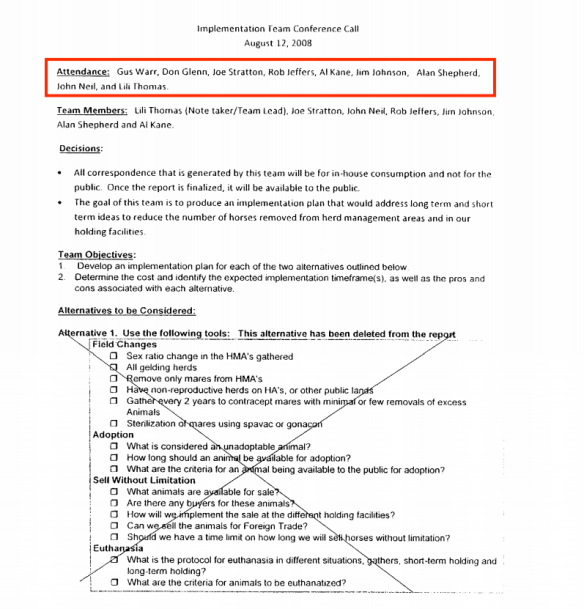The Bureau of Land Management plots to wipe out wild horses and burros at taxpayer expense. Is this how you want your tax dollars used?
“Jim says Burns takes them to a pit but they have always used it . . .”
Notice that Pesticide PZP, made from slaughterhouse pig ovaries, is part of their wipe out plan. It sterilizes after multiple use. Their goal is zero population increase which would ruin natural selection and make it impossible for the species to survive climate change.
Members of the public and some organizations have been fooled into supporting Pesticide PZP as the “lesser of two evils”. Those who believe in the true spirit of the Wild and Free-Roaming Horses and Burros Act of 1971 are attacked for speaking out against Pesticide PZP.
Follow the money if you want to understand who profits from forcibly drugging wild mares with Pesticide PZP for population control. . .
The Humane Society of the United States (HSUS) is the registrant of Pesticide PZP https://www3.epa.gov/pesticides/chem_search/reg_actions/pending/fs_PC-176603_01-Jan-12.pdf. HSUS called native wild horses and burros “PESTS” on the EPA Pesticide Application. Have they changed the legal definition of wild horses and burros with the EPA application that should be revoked?
Scott Beckstead, who was born and raised on a working cattle ranch and now works for HSUS, reported at the BoLM’s Spring 2016 Wild Horse and Burro Advisory Board meeting that HSUS is experimenting on a stronger form of Pesticide PZP. Does “stronger” mean their new form of Pesticide PZP will forcibly sterilize native wild horses and burros with one injection?
Wild horses and burros are underpopulated on public land which is overpopulated by beef cattle and sheep. Ranchers, BoLM and others try to scapegoat wild horses and burros for range damage when the truth is commercial livestock is destroying, or already has destroyed, the ecosystem.
July 29, 2008
“GonaCon® is also a product that needs to be relooked at for sterilization of mares.” (Quoted from item 4 above)
Read about the GonaCon® experiment at Water Canyon that launched in 2015: http://protectmustangs.org/?p=8488 They have hopes to use GonaCon™ on the whole Antelope Complex.
August 12, 2008
Thanks to Jane Cheuvront for the Google Earth photo)
Read our August 11th blog post: What’s in the mounds, craters and pits at American wild horse holding facilities? http://protectmustangs.org/?p=9458
See all the notes from the secret conference calls in 2008 about killing off America’s wild horses and burros: pm-blm-secret-killing-conference-calls-2008
Special thanks to Dr. Patricia Haight, RIP, with the Conquistador Equine Rescue for acquiring the documents through FOIA.
See the draft of the BLM Wild Horse and Burro Program Alternative Management Options from October 2008 the result of the secret conference calls: pm-blm-killing-plans
(Fred T. Woehl, Jr. and Sue McDonnell, PhD. for Wild Horse & Burro Research are some of the Wild Horse and Burro Advisory Board members, who voted on September 9, 2016, to kill the alleged “unadoptable” wild horses and burros)
Protect Mustangs is a 501c3 nonprofit organization dedicated to the protection and preservation of native and wild horses. www.ProtectMustangs.org



















